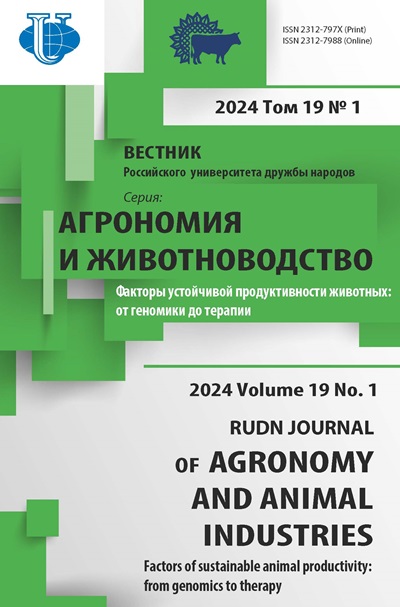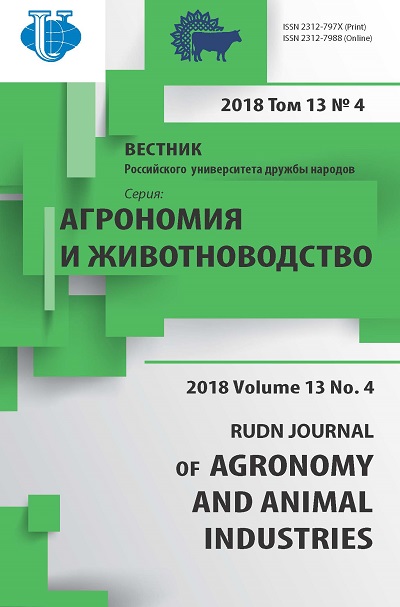THE EUROPEAN UNION’S COMMON AGRICULTURAL POLICY AND DEVELOPMENT OF AGRO-FOOD SECTOR IN GREECE
- Authors: Paskhalidis C.1, Petropoulos D.1, Sotiropoulos S.1, Papakonstantinou L.2
-
Affiliations:
- Technological Educational Institute of Peloponnese
- Agricultural University of Athens
- Issue: Vol 13, No 4 (2018)
- Pages: 373-382
- Section: Agricultural economy
- URL: https://agrojournal.rudn.ru/agronomy/article/view/19435
- DOI: https://doi.org/10.22363/2312-797X-2018-13-4-373-382
Cite item
Full Text
Abstract
About the authors
Christos Paskhalidis
Technological Educational Institute of Peloponnese
Email: chpaschal46@yahoo.gr
Candidate of Agricultural Sciences, Professor, Technological Educational Institute of Peloponnese Kalamata, 24100, Greece
Dimitrios Petropoulos
Technological Educational Institute of Peloponnese
Email: dpetro@teikal.gr
Candidate of Economic Sciences, Associate Professor, Technological Educational Institute of Peloponnese Kalamata, 24100, Greece
Stauros Sotiropoulos
Technological Educational Institute of Peloponnese
Email: ssotiropoulos@gmail.com
Senior Lecturer, School of Agriculture, Technological Educational Institute of Peloponnese Kalamata, 24100, Greece
Loukas Papakonstantinou
Agricultural University of Athens
Email: LoukPapak@gmail.com
Research Officer, Agronomist, Agricultural University of Athens Athens, 11855, Greece
References
- Maravégias N. I diadikasía tis Evropaikís olklírosis kai i ellinikí georgía sti dekaetía tou 90. Athína: ekdPapazisi; 1992. (In Greek).
- Rousianoú Aik. Koini agrotikí politikí kai agrotikí anáptyxi stin Elláda. Diplomatikí ergasía Panepistimio Patron; 2015. (In Greek).
- Roúfos CH. Enallaktikés stratigikés anáptyxis tou georgikoú toméa stin Elláda. Metaptychiakí Diatriví. Panepistímio Makedonías; 2011. (In Greek).
- Kormishkina LA, Semenova NN, Kormishkin ED. Problem of food security and agricultural development in the XXI century in Europe. An Agrarian Science of Euro-North-East. 2017; (1):74-78. (In Russ).
- Nazarenko VI. Forms and directions of state support for agriculture in the West. Economy of agricultural and processing enterprises. 2007; (3):10-13. (In Russ).
- European Commission - Eurostat: Farm Structure - Historical Results -Surveys from 1966/67 to 1997. Eurostat; 2010.
- Pézaros P. I koiní Agrotikí Politikí Exélixi kai Prooptikés. 2011. (In Greek).
- Pezaros P. The Agenda 2000: CAP reform agreement in the light of the future EU enlargement. European Institute of Public Administration; 1999.
- Tzakósta A. I Néa Koiní Agrotikí Politikí stin Elláda Efarmogi kai epiptóseis. 2010. (In Greek).
- Lekkos I, Leventákis A. I symvolí kai prooptikés tou agrotrofikoú toméa stin Elláda. Meléti tis Trápeza Peiraió; 2015. (In Greek).
- Benatos G. The agricultural sector in Greece (meaning - problems - perspective). Athens; 2007. (In Greek).
- Kadíti E, Nítsi E. O Agrotikós Toméas stin Elláda Ekthéseis. 60 Kentro Programmatismoú kai Oikonomikón Erevnón. Athína; 2010. (In Greek).
- Paskhalidis C, Petropoulos D, Sotiropoulos S, Zamanidis P, Chamurliev GO, Papakonstantinou L. The main trends of Greece agricultural policy. Mezhdunarodnaya nauchno-prakticheskaya konferentsiya. Volgograd: VGAU Publ; 2018. (In Russ).
- Savvas D. Development of plant production in Greece. Athens; 2014. (In Greek).
- Ellinikí Dimokratía Ypourgeío Anáptyxis kai Trofímon. ΄Protáseis tis Evropaikís Epitropís gia tin Koiní Agrotikí Politikí me orízonta to 2014-2020. 2011. (In Greek).
- Petrópoulos D. I diéyrynsi tis Evropaikis Enosis kai i thési tou agrotikoú toméa tis Elládas. Epitheorisi Oikonomikón Epistimón TEI Ipeirou, Tefchos 11. 2007. (In Greek).
















